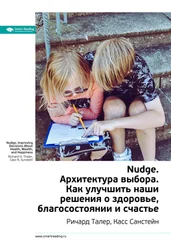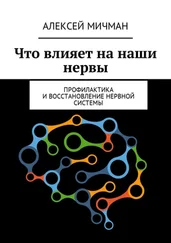13. S. Baron-Cohen. Mindblindness: An essay on autism and theory of mind. MIT Press, 1997.
14. S. Baron-Cohen, A. M. Leslie, and U. Frith. Does the autistic child have a ‘theory of mind’? Cognition, 21(1):37–46, 1985.
15. J. L. Barrett and A. H. Johnson. The role of control in attributing intentional agency to inanimate objects. Journal of Cognition and Culture, 3(3):208–217, 2003.
16. R. F. Baumeister, M. Gailliot, C. N. Dewall, and M. Oaten. Self-regulation and personality: How interventions increase regulatory success, and how depletion moderates the effects of traits on behavior. Journal of Personality, 74:1773–1801, 2006.
17. R. F. Baumeister and E. J. Masicampo. Conscious thought is for facilitating social and cultural interactions: How mental simulations serve the animal-culture interface. Psychological Review, 117(3):945–971, 2010.
18. R. F. Baumeister, E. J. Masicampo, and K. D. Vohs. Do conscious thoughts cause behavior? Annual Review of Psychology, 62:331–361, 2011.
19. R. F. Baumeister, B. J. Schmeichel, C. N. Dewall, and K. D. Vohs. Is the conscious self a help, a hindrance, or an irrelevance to the creative process? Advances in Psychology Research, 53:137–152, 2006.
20. R. F. Baumeister, J. M. Twenge, and C. K. Nuss. Effects of social exclusion on cognitive processes: Anticipated aloneness reduces intelligent thought. Journal of Personality and Social Psychology, 83:817–827, 2002.
21. R. F. Baumeister, K. D. Vohs, and D. M. Tice. The strength model of self-control. Current Directions in Psychological Science, 16:351–355, 2007.
22. D. J. Bem. Self-perception: An alternative interpretation of cognitive dissonance phenomena. Psychological Review, 74(3):183–200, 1967.
23. R. J. R. Blair. Responsiveness to distress cues in the child with psychopathic tendencies. Personality and Individual Differences, 27(1):135–145, 1999.
24. R. J. R. Blair. The amygdala and ventromedial prefrontal cortex in morality and psychopathy. Trends in Cognitive Sciences, 11(9):387–392, 2007.
25. L. B. Bräcker, K. P. Siju, N. Varela, Y. Aso, M. Zhang, I. Hein, M. L. Vasconcelos, and I. C. Grunwald Kadow. Essential role of the mushroom body in context-dependent CO2 avoidance in Drosophila. Current Biology, 23(13):1228–1234, 2013.
26. J. P. Brasil-Neto, A. Pascual-Leone, J. Valls-Solé, L. G. Cohen, and M. Hallett. Focal transcranial magnetic stimulation and response bias in a forced-choice task. Journal of Neurology, Neurosurgery & Psychiatry, 55(10):964–966, 1992.
27. K. A. Braun, R. Ellis, and E. F. Loftus. Make my memory: How advertising can change our memories of the past. Psychology & Marketing, 19(1):1–23, 2002.
28. C. A. Brown, B. Seymour, Y. Boyle, W. El-Deredy, and A. K. P. Jones. Modulation of pain ratings by expectation and uncertainty: Behavioral characteristics and anticipatory neural correlates. Pain, 135(3):240–250, 2008.
29. J. M. Burger. The foot-in-the-door compliance procedure: A multiple-process analysis and review. Personality and Social Psychology Review, 3(4):303–325, 1999.
30. J. T. Cacioppo, L. C. Hawkley, and G. G. Bernston. The anatomy of loneliness. Current Directions in Psychological Science, 12:71–74, 2003.
31. P. Carruthers. How we know our own minds: The relationship between mindreading and metacognition. Behavioral and Brain Sciences, 32(2):121–182, 2009.
32. H. A. Chapman, D. A. Kim, J. M. Susskind, and A. K. Anderson. In bad taste: Evidence for the oral origins of moral disgust. Science, 323:1222–1226, 2009.
33. T. L. Chartrand and J. A. Bargh. The chameleon effect: The perception-behavior link and social interaction. Journal of Personality and Social Psychology, 76:893–910, 1999.
34. T. L. Chartrand, J. Huber, B. Shiv, and R. J. Tanner. Non-conscious goals and consumer choice. Journal of Consumer Research, 35(2):189–201, 2008.
35. T. L. Chartrand, S. Pinckert, and J. M. Burger. When manipulation backfires: The effects of time delay and requester on the foot-in-the-door technique. Journal of Applied Social Psychology, 29(1):211–221, 1999.
36. M. Chen and J. A. Bargh. Nonconscious behavioral confirmation processes: The self-fulfilling consequences of automatic stereotype activation. Journal of Experimental Social Psychology, 33(5):541–560, 1997.
37. J. J. Christensen-Szalanski. Discount functions and the measurement of patients’ values: Women’s decisions during child-birth. Medical Decision Making, 4(1):47–58, 1984.
38. R. B. Cialdini. Crafting normative messages to protect the environment. Current Directions in Psychological Science, 12(4):105–109, 2003.
39. R. B. Cialdini, L. J. Demaine, B. J. Sagarin, D. W. Barrett, K. Rhoads, and P. L. Winter. Managing social norms for persuasive impact. Social Influence, 1(1):3–15, 2006.
40. R. B. Cialdini and N. J. Goldstein. Social influence: Compliance and conformity. Annual Review of Psychology, 55:591–621, 2004.
41. S. A. Clancy, R. J. Mcnally, D. L. Schacter, M. F. Lenzenweger, and R. K. Pitman. Memory distortion in people reporting abduction by aliens. Journal of Abnormal Psychology, 111(3):455–461, 2002.
42. J. J. Clarkson, E. R. Hirt, L. Jia, and M. B. Alexander. When perception is more than reality: The effects of perceived versus actual resource depletion on self-regulatory behavior. Journal of Personality and Social Psychology, 98(1):29–46, 2010.
43. M. K. Colvin and M. S. Gazzaniga. Split-brain cases. In M. S. Velmans and S. Schneider, editors, The Blackwell Companion to Consciousness, pages 181–193. Blackwell Publishing, 2006.
44. J. Correll, B. Park, C. M. Judd, and B. Wittenbrink. The police officer’s dilemma: Using ethnicity to disambiguate potentially threatening individuals. Journal of Personality and Social Psychology, 83(6):1314, 2002.
45. R. Custers and H. Aarts. The unconscious will: How the pursuit of goals operates outside of conscious awareness. Science, 329(5987):47–50, 2010.
46. J. M. Darley and P. H. Gross. A hypothesis-confirming bias in labeling effects. Journal of Personality and Social Psychology, 44(1):20–33, 1983.
47. J. M. R. Delgado. Physical Control of the Mind: Toward a Psychocivilized Society. Harper and Row, 1969.
48. C. N. Dewall, R. F. Baumeister, and E. J. Masicampo. Evidence that logical reasoning depends on conscious processing. Consciousness and Cognition, 17(3):628–645, 2008.
49. A. Dijksterhuis. Automaticity and the unconscious. In S. T. Fiske, D. T. Gilbert, and G. Lindzey, editors, Handbook of Social Psychology, pages 228–267, 2010.
50. A. Dijksterhuis, M. W. Bos, L. F. Nordgren, and R. B. Van Baaren. On making the right choice: The deliberation-without-attention effect. Science, 311(5763):1005–1007, 2006.
51. J. Doyon and H. Benali. Reorganization and plasticity in the adult brain during learning of motor skills. Current Opinion in Neurobiology, 15(2):161–167, 2005.
52. R. I. M. Dunbar. The social brain hypothesis. Evolutionary Anthropology, 6:178–190, 1998.
53. R. I. M. Dunbar and S. Shultz. Evolution in the social brain. Science, 317(5843):1344–1347, 2007.
54. D. G. Dutton and A. P. Aron. Some evidence for heightened sexual attraction under conditions of high anxiety. Journal of Personality and Social Psychology, 30:510–517, 1974.
55. A. J. Elliot, D. Niesta Kayer, T. Greitemeyer, S. Lichtenfeld, R. H. Gramzow, M. A. Maier, and H. Liu. Red, rank, and romance in women viewing men. Journal of Experimental Psychology: General, 139:399–417, 2010.
56. A. J. Elliot and D. Niesta. Romantic red: Red enhances men’s attraction to women. Journal of Personality and Social Psychology, 95:1150–1164, 2008.
57. N. Epley, A. Waytz, and J. T. Cacioppo. On seeing human: A three-factor theory of anthropomorphism. Psychological Review, 114(4):864–886, 2007.
Читать дальше
Конец ознакомительного отрывка
Купить книгу
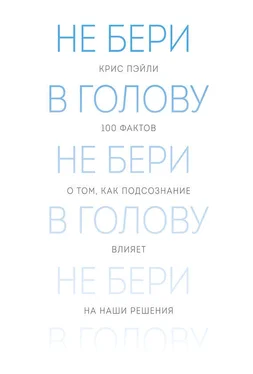
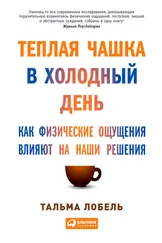

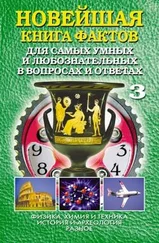
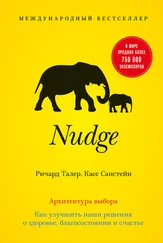
![Мэтью Джексон - Человеческие сети [Как социальное положение влияет на наши возможности, взгляды и поведение]](/books/390847/metyu-dzhekson-chelovecheskie-seti-kak-socialnoe-po-thumb.webp)

